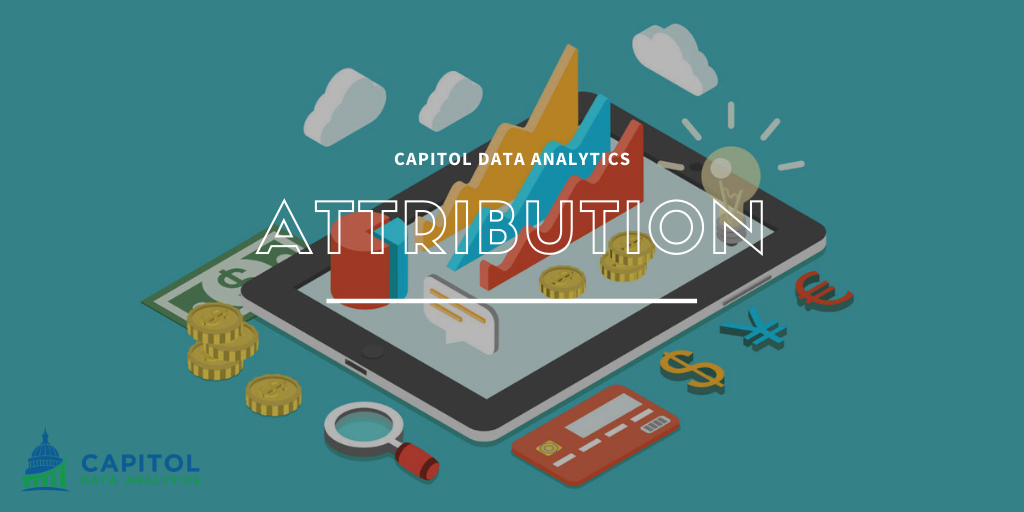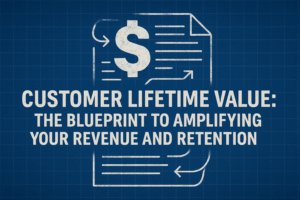Attribution Of Online Customers
Attribution models attempt to define how each interaction with advertisements along the customer’s journey contributes to the customer’s decision whether to purchase. Even though marketers have access to loads of consumer data, the last-click and pre-defined Google Analytics models prevail. This article will go into the faults of these methods and put forward potential replacements.

Heuristic Models
Heuristic models are models that assign credit conversion by a set of rules. These models include last touch, first touch, linear touch, decay models and more. The most common model and the one you are probably familiar with is the last touch model.
The last touch model applies 100% of the credit to whatever the customer touched last before converting. This method is favored, because it is easy to implement and easy to understand. However, it has some serious limitations. Take a look at the example purchase pathway below.

In this example the SEO touchpoint would have received the credit for the conversion and the marketer would have been blind to the previous touchpoints. This is obviously not ideal. When the marketer goes to optimize the budget, they would say our SEO is producing 100% of our sales why would we waste money on SEM and Email campaigns?
You can get a little better by applying a linear model, u shaped model, or decay-based model. In these instances, you look at the entire customer pathway, but you assign values that may not represent reality. If we go back to our customer pathway we can see that a linear model would give all three touchpoints 1/3 of a conversion. Maybe it is true on this conversion pathway that each touchpoint provided equally as much value to the customer. When more customer pathways are added, eventually some marketing channels will become more effective then others.
If you are giving equal credit to each touchpoint you would shortchange some while over valuing others. Once again, the marketer is stuck trying to optimize budgets and gain insights based on a model that is misclassifying.
Google Analytics Attribution

GA is a great tool that is ubiquitous for most online oriented businesses. Over the years their attribution has improved and can even be helpful. Here are a few pros of using GA for attribution:
- You don’t need to organize a storage and infrastructure for collecting data,
- You are provided with a range of heuristic models
- It is easy and free to use
Now let’s look at a few of the downsides of using GA for attribution:
- The data are aggregated and anonymized and you can’t mine deeper if you want
- You can’t take into account paths without conversions but this would be interesting
- The use of Heuristic models as outline earlier is problematic
If you are relatively small company it would be logical to use the GA’s approach but if you see the results of attribution would have a significant impact on marketing budgets, product prices, understanding customer journeys, etc. or you have the necessary data collected, you can explore the next section.
ADescriptive And Predictive Models
You are probably telling yourself great I shouldn’t be using Heuristic models or GA to measure my attribution, so what should I be doing. My recommendation is to use data modeling techniques to unlock your clickstream data instead of ignoring it.
These models fall into two categories: descriptive and predictive. In general, descriptive modeling is used to understand the contribution of each advertising channel better, while predictive modeling may yield more usable results in budget allocation, continuous evaluation and control of on-going campaigns.
My two favorite model examples are the logistic regression and Markov models. These two models do different things. The logistic regression classifies customers as conversions (or not) and estimates the credit to give each channel based on channel interaction. This model is great for strategies to optimize budgets and compare marketing channels. The Markov model estimates the transition probability between marketing channels. This makes the Markov model a great model to describe the system that leads to conversions.

- Here are the pros of using these types of models:
- You can take into account all of your clickstream data, so you are not blindly following a rule
- You can look at smaller customer segments or even individual customer paths
- For longer conversion pathways you get a more holistic picture of conversion
- You can use predictive models to lead action in the marketing department
There are some cons as well:
- You must have some sort of data infrastructure to source, store and analyze this data
- Not as easy to implement
- For pathways of only one touchpoint you will produce similar results to the heuristic models
Summary
Now that we went through heuristic, predictive, descriptive, and GA attribution models I hope you have a better idea of why marketers should move away from heuristic and GA models and move towards more descriptive and predictive models.


